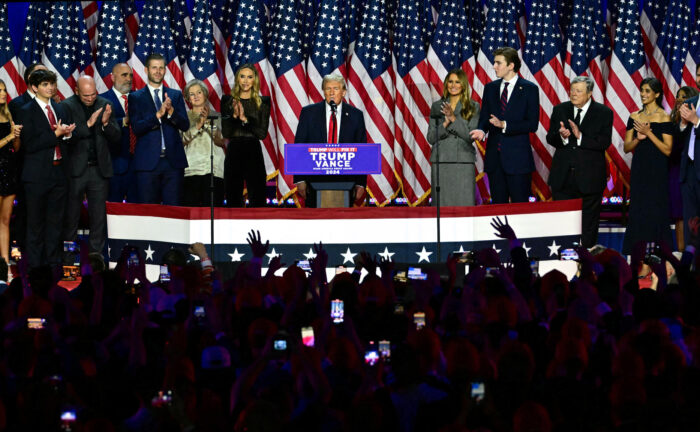
Learning from the Election Results
We are just a little more than a week past the election, but it seems like the distant past. Before the excitement fades away, it is worth reflecting on some things marketers can learn about branding and strategy from what happened.
Don’t Assume Others Are Like You
It is very tempting to assume that everyone is just like us. We usually believe our opinions are rational and logical, so naturally other people will look at things the same way and reach the same conclusions.
As the election results showed, this approach is a good way to get into trouble when it comes to elections, marketing and new product development.
Many people were astonished by Donald Trump’s big win, and the fact that so many people were eager for a change.
The surprise reflects the reality that people are experiencing very different economic situations in the U.S. People who own their homes and have investments are doing well as real estate prices and the stock market rise.
People who rent and live paycheck to paycheck are having trouble. Inflation is running faster than wage increases, creating a problem for many.
For the first group, there isn’t an urgent need for a change. For the second group, a continuation of Joe Biden’s policies is the wrong approach.
This is all a good reminder that to be an effective marketer, you have to step outside of your own circumstances and listen to others with empathy and an open mind.
Embrace a Powerful Strategy
In the days leading up to the election, the Trump campaign focused on a spot about the transgender issue, featuring a video of Kamala Harris saying, “Surgery, for prisoners. Every transgender inmate in the prison system would have access.” The ad finished with the line, “Kamala is for they them. President Trump is for you.”
This is an example of a clear strategy. The Trump campaign could have discussed many different messages, but it settled on just one. I suspect the Trump team had data that showed that many people were uncomfortable with the transgender issue. Linking Harris to it was a good way to make her seem out of touch.
Or perhaps the Trump team just looked back at Bud Light and what happened when that brand was seen as supporting a transgender influencer.
The Harris campaign made a strategic choice to focus on Trump’s threat to democracy and the idea that Trump was a fascist. This was ultimately not a motivating message. I suspect most people don’t know what a fascist is.
Be Authentic
We live in a world where reality can be hard to find. When you talk on the phone, it isn’t always clear if you are talking to a person or a bot. A photo might be real, or it might be doctored and altered. A person in a video could be real, or it might be an AI creation.
An entertaining way to pass the time in a Zoom meeting is trying to figure out if a background is real or virtual.
All this makes authenticity more important than ever. Kamala Harris seemed to have a problem in this area. She often answered questions in an indirect way. She spoke like many politicians do, in a cautious, hesitant fashion, considering each word and how it might be interpreted.
Donald Trump is an untraditional candidate. He veers off the prepared script. He says things that are awkward and ill-considered. Still, all of this creates a feeling of authenticity. He isn’t a perfectly coached and prepared candidate. His wandering rally monologues seemed like his actual thought process.
Create Excitement
It was striking that in the final days of the campaign, both candidates turned away from the battleground states to do high-profile events. Donald Trump went to New York City to hold a rally at Madison Square Garden. Kamala Harris traveled back to Washington to speak outside the White House.
These were unexpected moves because New York and DC were never in play. Both were firmly in the Harris camp.
But the campaigns understood the importance of attracting attention with stunning visuals. People aren’t likely to talk about a rally in Madison, Wisconsin. They will notice a rally in Madison Square Garden.
The emphasis on events reflects a broader change in the media world. Local and regional media outlets are in decline. National outlets are playing a more important role. The big Trump and Harris events were all about getting interest, coverage and attention across the U.S. In both cases, it seemed to work.
Embrace Influencers
Influencers matter. Both campaigns worked very hard to engage with influencers, but the Trump campaign seemed to do a better job in this area.
Trump’s efforts to engage with podcasters were particularly notable. He did a three-hour interview with Joe Rogan, delaying a rally in Traverse City, Michigan. Trump sat down for an interview with financial influencer Dave Ramsey. Kamala Harris apparently declined both opportunities.
Harris courted influencers, too. She did an interview with Alex Cooper’s Call Her Daddy podcast, for example, and others.
Influencers are particularly important because they can deliver a long-form message. TV spots are thirty seconds and then gone. TikTok posts are sometimes even shorter and exist just briefly before being lost under the wave of new posts. Podcasts are usually longer, and they stick around.
Some Things We Can Agree On
While we are a polarized country, I think people can agree on three things.
First, it was good to have a clear winner. Tight elections lead to problems: court cases, hanging chads, political wheeling and dealing. None of this is good.
Second, there were no notable claims of election fraud. This was a fair election. Hopefully we can now move past dangerous talk of stolen elections.
Third, it will be an interesting few years. The next campaign starts now.
Comments RSS Feed